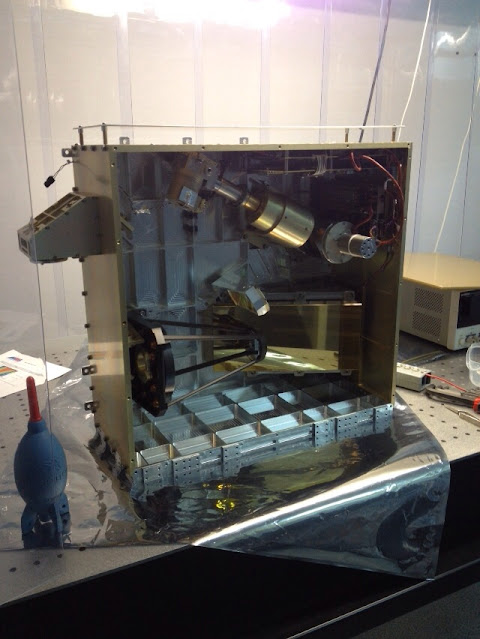ESA & ROSCOSMOS - ExoMars Mission patch.
Sept. 18, 2020
As shown by the on-line analysis of data from the MIR mid-infrared spectrometer (part of the ACS complex, English - Atmospheric Chemistry Suite) on board the Trace Gas Orbiter orbital module of the Russian-European mission ExoMars-2016, there is no phosphine in the atmosphere of the Red Planet, the measurement sensitivity is 2 ppb (parts per billion).
Interest in phosphine as a possible indicator of biological activity arose after the recent publication of results on the discovery of this substance in the atmosphere of Venus at a concentration of about 20 ppb.
“It became interesting for us to see if there are any“ traces ”of phosphine in the data of the MIR spectrometer for two years of measurements. Our device operates in a wide range of wavelengths, including where the absorption bands of phosphine are located - 4.2 microns, ”says Alexander Trokhimovskiy, leader of the MIR spectrometer, an employee of the planetary physics department of the Institute of Space Research of the Russian Academy of Sciences.
MIR (MIR - short for Mid-IR, mid-infrared range) is one of three spectrometers in the Russian ACS instrument, which has been operating on board the TGO mission spacecraft since 2018. Its task is to search for small constituents in the atmosphere of Mars, primarily methane, which is still considered the main candidate for biomarkers. However, as the recent "news from Venus" shows, it is not only methane that may be interesting in terms of life.
“The spectral resolution of the device is very high, and it could register rather low concentrations of phosphine,” notes Alexander Trokhimovsky. - But, as our data show, there is no phosphine in the atmosphere of Mars, or very little, no more than 2 particles per billion. Unfortunately, this biomarker is apparently missing on the Red Planet. "
These results are scheduled to be published shortly.
The search for methane is still relevant for Mars. According to the ACS, the content of this gas in the atmosphere is also small - no more than 5 particles per trillion. The more mysterious are the phenomena of sharp increases in concentrations that were recorded by the instruments of the Curiosity rover - up to 21 particles per billion at the planet's surface. How these "emissions" occur and why they are destroyed so quickly in the atmosphere is a question that remains to be answered, including during the second phase of the ExoMars project.
More information:
The ExoMars project is a joint project of Roscosmos and the European Space Agency. It is implemented in two stages. The first mission, launched in 2016, includes two spacecraft: the Trace Gas Orbiter for observing the planet's atmosphere and surface and the Schiaparelli lander for testing landing technologies.
The scientific tasks of the TGO apparatus are registration of small components of the Martian atmosphere, including methane, mapping the abundance of water in the upper layer of the soil with a high spatial resolution of the order of tens of kilometers, and stereo imaging of the surface. The spacecraft is equipped with two instruments made in Russia: the ACS spectrometric complex and the FREND high-resolution neutron telescope. Russia also provides a Proton-M carrier rocket with a Briz-M upper stage for launch.
The second stage of the project (launch in 2022) provides for the delivery to the surface of Mars of the Russian landing platform Kazachok with the European rover Rosalind Franklin on board. Russia is providing the Proton-M launch vehicle with the Briz-M upper stage for launch. As part of both stages, a ground-based scientific complex of the ExoMars project is being created in Russia, combined with the European Space Agency, for receiving, archiving and processing scientific information.
ROSCOSMOS Press Release: https://www.roscosmos.ru/29237/
Related article:
Possible Marker of Life Spotted on Venus
https://orbiterchspacenews.blogspot.com/2020/09/possible-marker-of-life-spotted-on-venus.html
Images, Text, Credits: ROSCOSMOS/ESA/Orbiter.ch Aerospace/Roland Berga.
Best regards, Orbiter.ch





